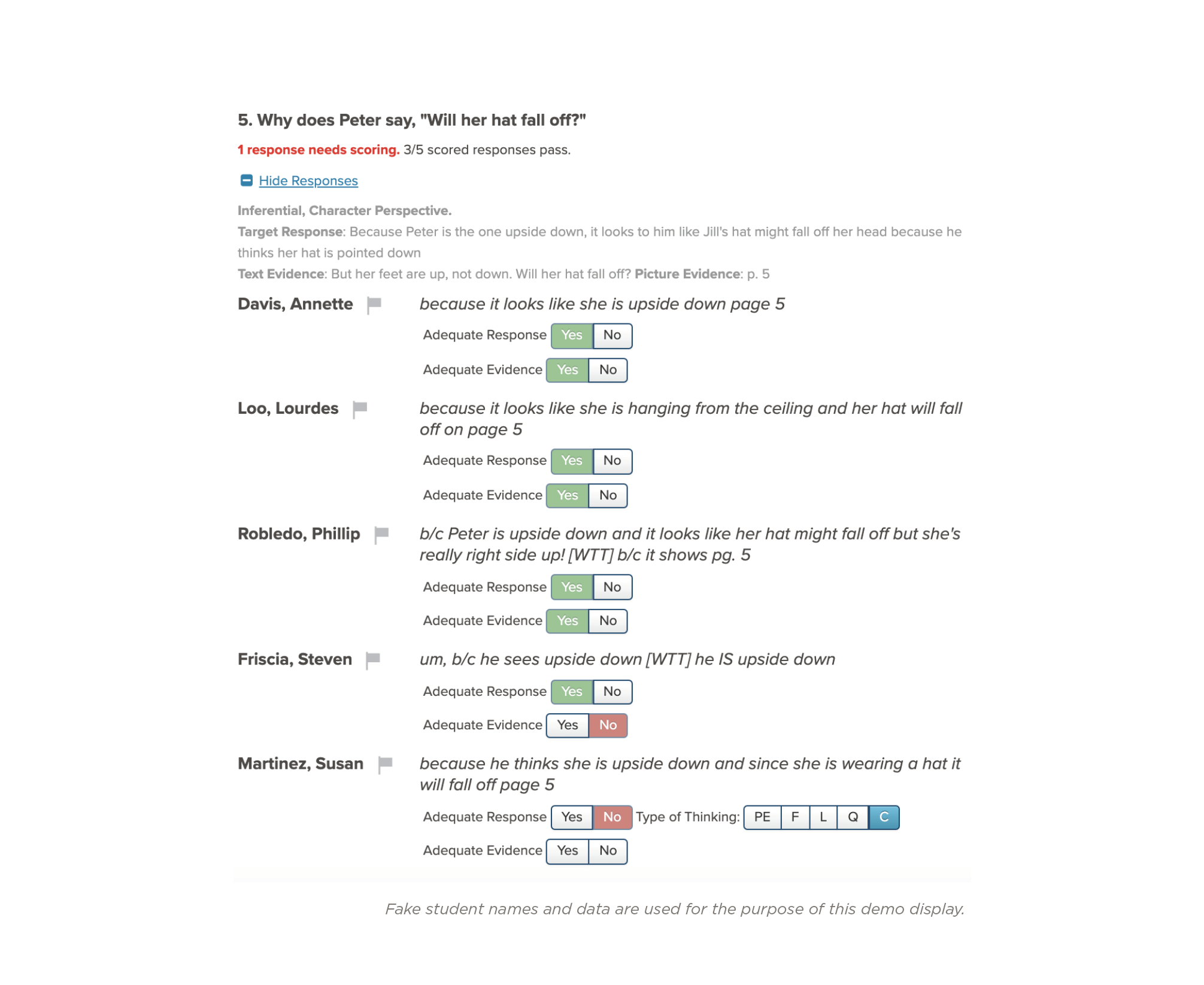
Teaching students to read is one of the hardest jobs in education and teachers don't receive enough support to ensure students are on-track to reading proficiency. STEP changes this reality.
What is STEP?
STEP™ (Strategic Teaching and Evaluation of Progress) is a research-based formative assessment, data management, and professional learning system designed to build teacher capacity for literacy instruction and provide educators with the data necessary to improve student achievement in literacy across grades K-5.
Early reading proficiency is a key milestone for all students, but too often students miss that critical marker. When children fall behind in literacy development, it becomes difficult for them to catch up to on grade-level peers. Further, teachers working with students who have missed developmental milestones often have insufficient data to both identify where the student is struggling and how best to intervene. STEP was originally developed by a team of researchers and practitioners and led by Tony Bryk and David Kerbow at UChicago’s Urban Education Institute to help provide teachers with access to the data and skills needed to improve student outcomes.
Why STEP?
STEP provides districts and networks a meaningful, developmental literacy assessment that offers schools, leaders, and teachers rich, reliable student data. With STEP data, educators are equipped to increase the number of students on track to reading proficiency. In addition, STEP's team of Managers of Professional Learning empowers teachers to interpret and act on STEP data to improve and/or modify literacy practices to boost student achievement.
According to STEP’s validation report, students who reach STEP 12 by the end of third grade have an 86% chance of meeting or exceeding state standards.
STEP Features
The STEP Assessment
The STEP Assessment is an online, formative literacy assessment that provides educators with the insight needed to tailor instruction to meet the literacy needs of their students. When using STEP, teachers assess students at multiple points throughout the year to determine current achievement and instructional needs. Students progress across 19 distinct developmental steps toward the level of reading proficiency expected for grades Kindergarten through 5th grade. STEP offers two distinct assessment series, “Construct & Stabilize” and “Strengthen & Expand.”

STEP: Construct & Stabilize Series
The Construct & Stabilize series supports students with reading levels equivalent to the Kindergarten through 3rd grade levels and is designed to inform teachers about student progression against primary literacy skills necessary to build a strong foundation for later literacy development. The series is available in two equally leveled fiction texts, as well as one nonfiction text, and assesses the following reading skills:
- Phonemic Awareness
- Concepts about Print
- Letter/Word Knowledge
- Reading Accuracy and Use of Word Solving Strategies
- Fluency and Reading Rate
- Comprehension Conversation
- Retelling
- Developmental Spelling
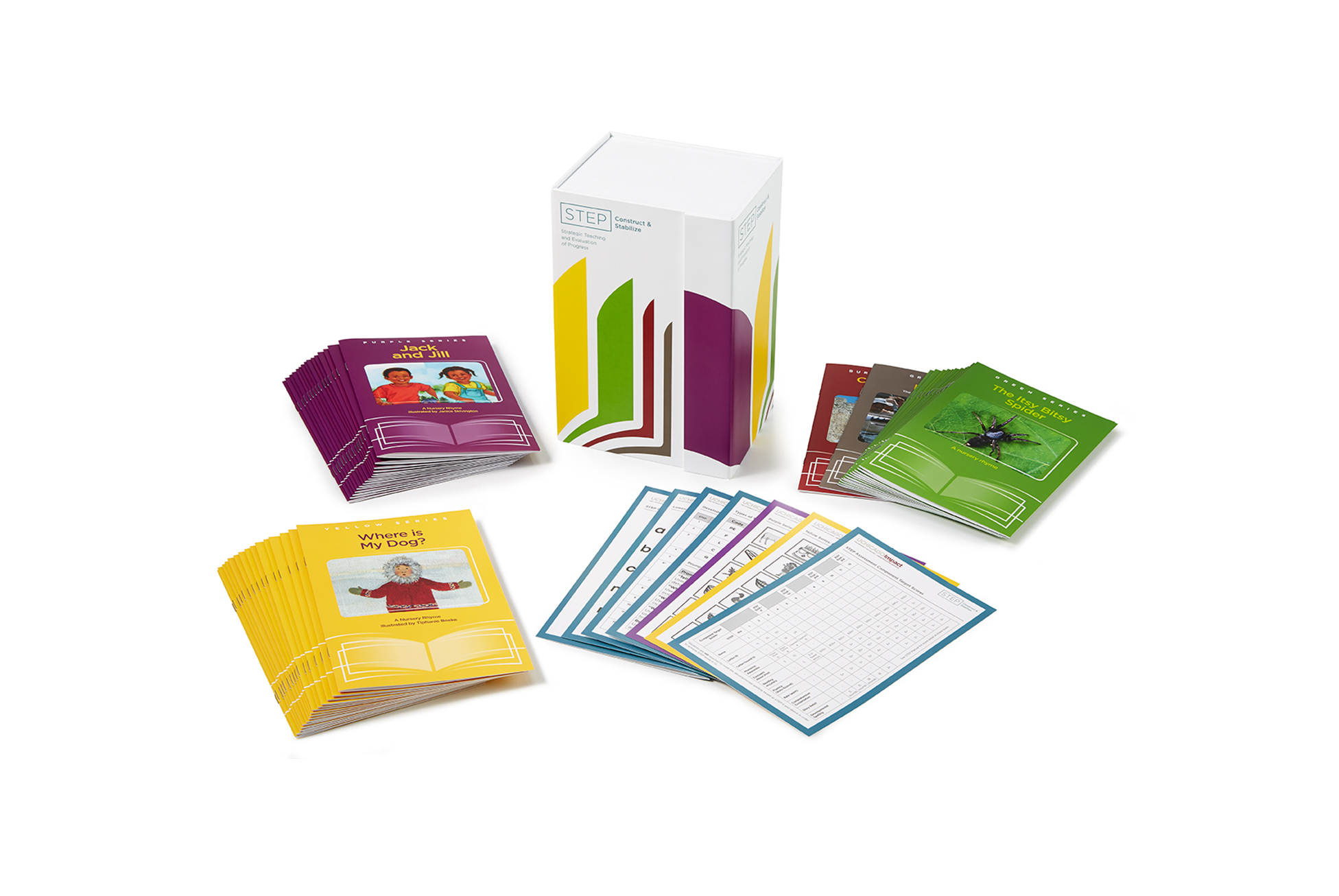
STEP: Strengthen and Expand Series
The Strengthen & Expand series is designed to support students with reading levels equivalent to the 3rd through 5th grades. The series builds upon the foundational literacy skills established in the Construct & Stabilize series to deepen comprehension skills. It features nonfiction text with an emphasis on Science and Social Studies. The series assesses the following reading skills:
- Vocabulary
- Author’s Craft and Purpose
- Text Analysis and Features
- Comprehension
- Written Response
- Independent Compare and Contrast

Online Progress Monitoring
Online Progress Monitoring allows teachers to isolate and monitor a singular reading skill or set of skills aligned to each student’s assessed needs. All associated materials and resources for Online Progress Monitoring are available electronically through the Data Management System.
All data captured for interactive, online progress monitoring is housed within the STEP Data Management System, thus enabling a clear picture of each student’s ongoing needs and progress.
The STEP Data Management System
The STEP Data Management System supports educators in using data to inform literacy instruction for all students, including those struggling to read proficiently as well as those reading at or above grade level. Teachers use the system to individually administer the STEP Assessment to students and results are viewed in real-time. As a student works through the various components of the assessment, the teacher captures student responses and that information is immediately available for scoring and analysis—enabling teachers to quickly make data-informed adjustments to their literacy instruction. STEP Assessment results can be filtered to highlight student achievement and progress toward reading goals and viewed at the network/district, school, grade, classroom, group, and individual student levels.
STEP Data Displays
The STEP Data Management System provides comprehensive insight into students’ reading abilities through historical, descriptive student data. The system generates a range of data displays, negating the need for educators to create charts.
The Network/District Wall
This Network/District Wall is a display of aggregate STEP achievement levels and growth for all schools within a network or district. Administrators can use this display to determine if assessment results have been entered, scored, and completed, as well as quickly identify high-level achievement trends across their schools.
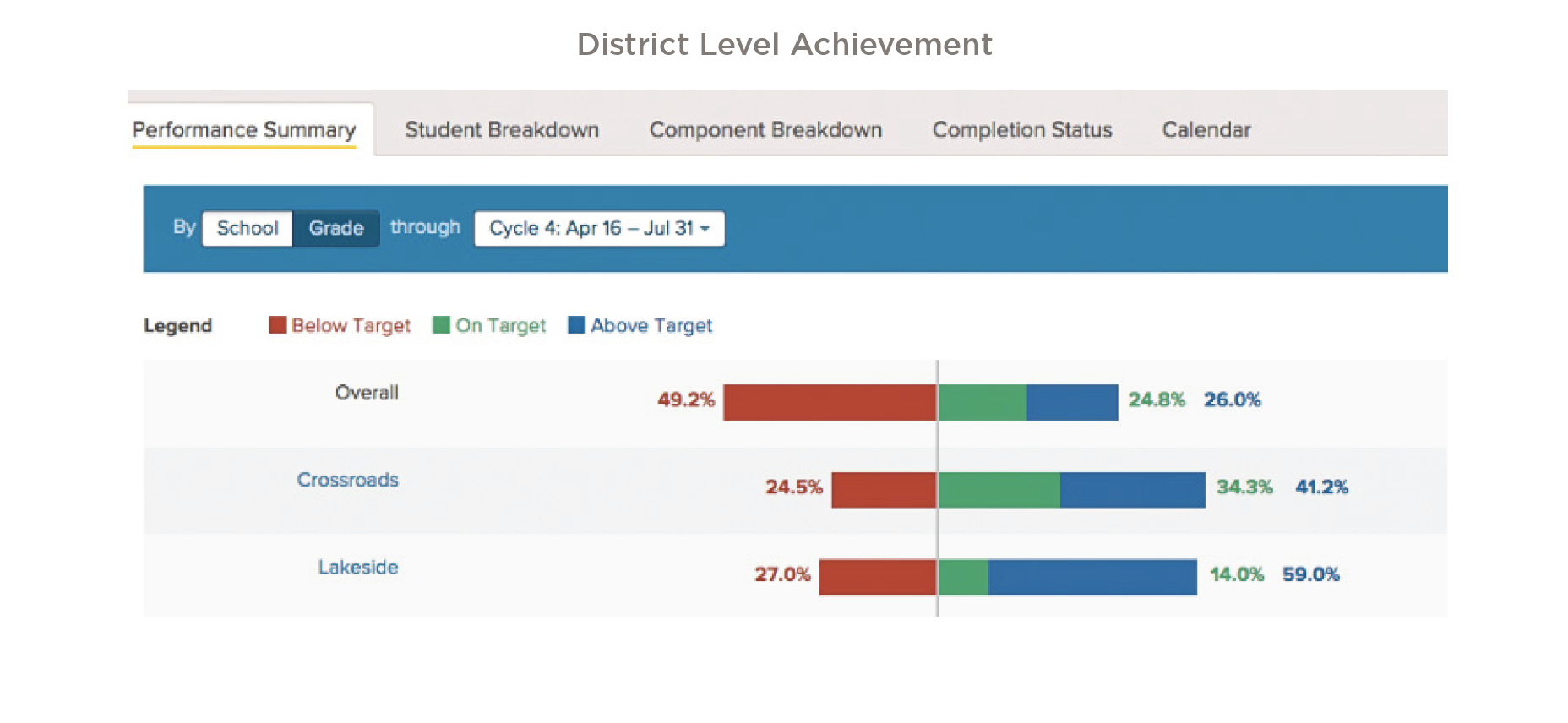
The School Wall
The School Wall display provides a high-level view that indicates achievement and growth across and within grades represented in a school. School administrators and reading coaches use this display to identify achievement trends to determine and prioritize instructional supports for students and teachers.

The Classroom Wall
The Classroom Wall display provides teachers a snapshot of achievement for students in their classroom. Teachers use this display to track progress and growth within the term. This information should then be utilized to create groups and inform instructional planning.

Student Displays
Student level displays offer access to a cumulative record of each student’s performance that depicts the rate and dates of progress. This helpful display indicates if a student is progressing consistently or has hit a plateau at a particular developmental level.
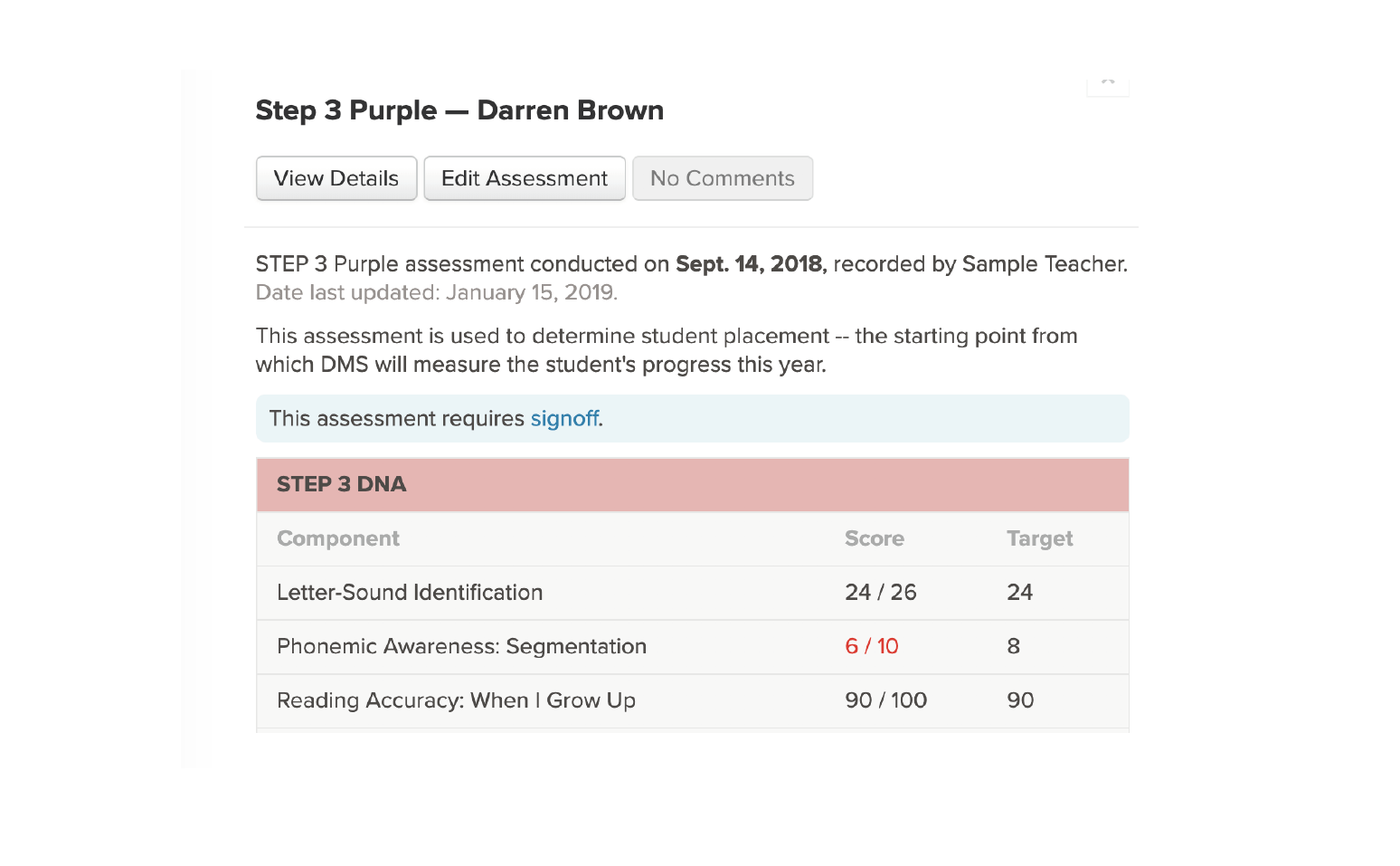
Component Level Display
This display provides teachers with details of achievement across the components of the assessment, such as rate, fluency, and comprehension. Users are also able to view target levels and student results for each item within the assessment.
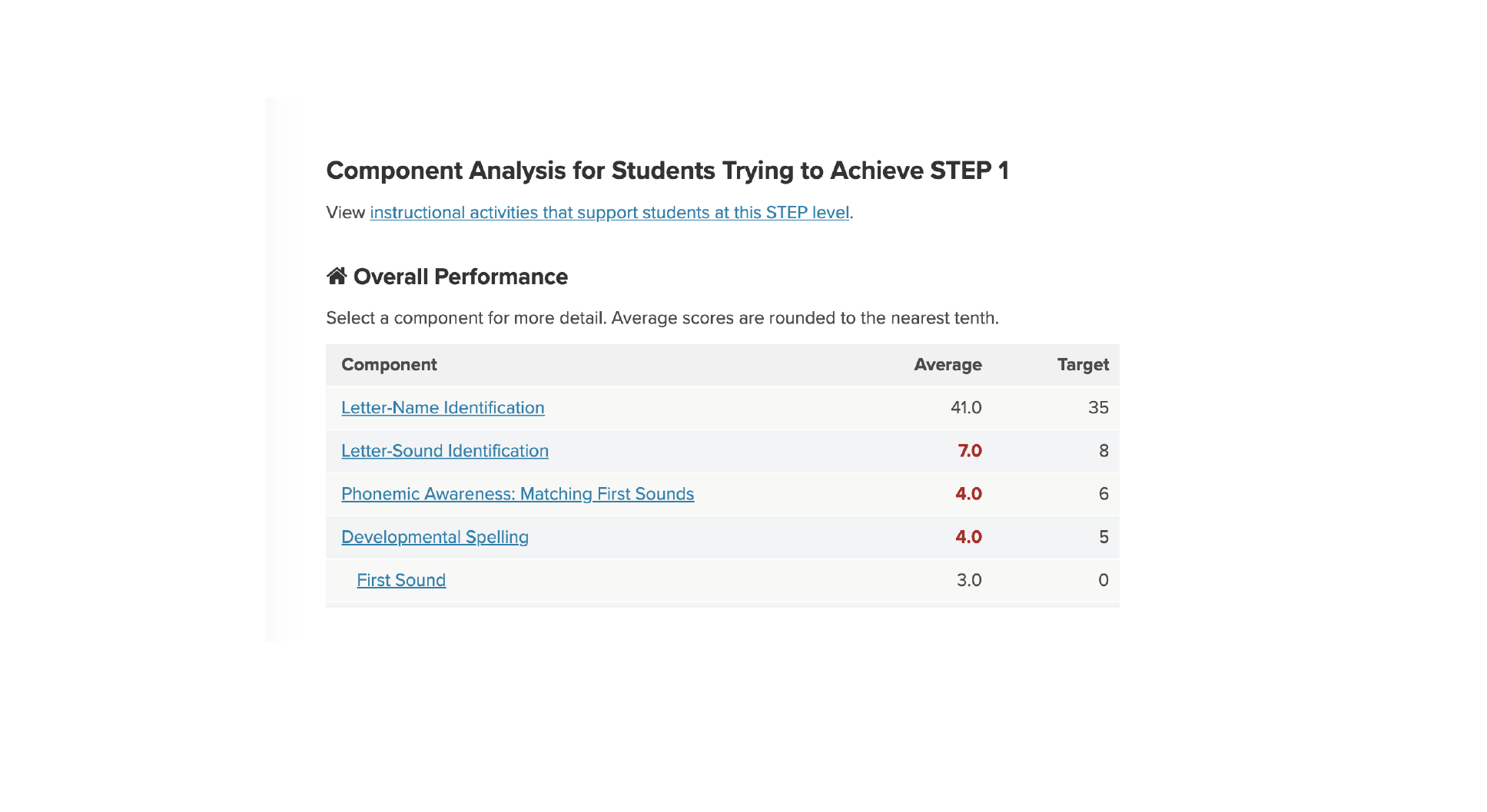
Assessment Scoring Deep Dive
Rather than scoring each assessment individually, the Assessment Scoring display allows teachers to score all student responses for the same question at one time. Here, teachers can quickly compare and score each response against the STEP target response and indicate if the student provided adequate text evidence.
